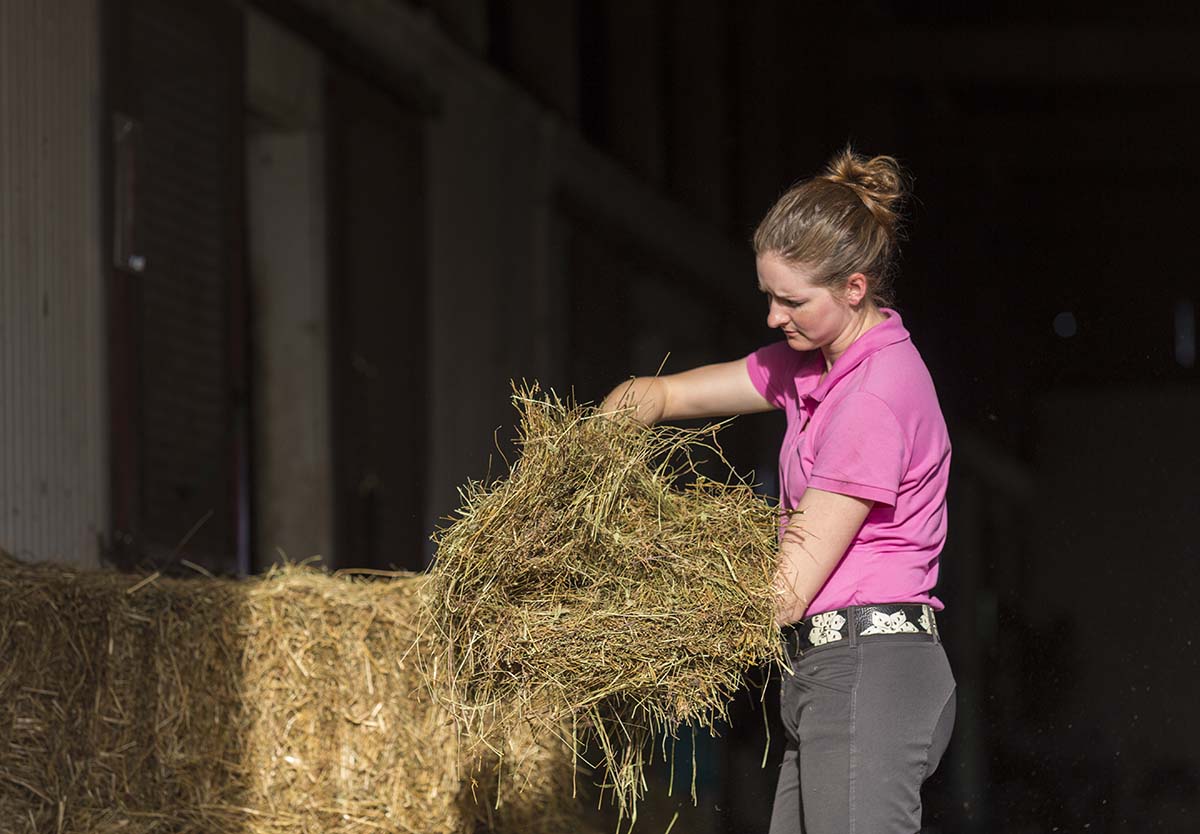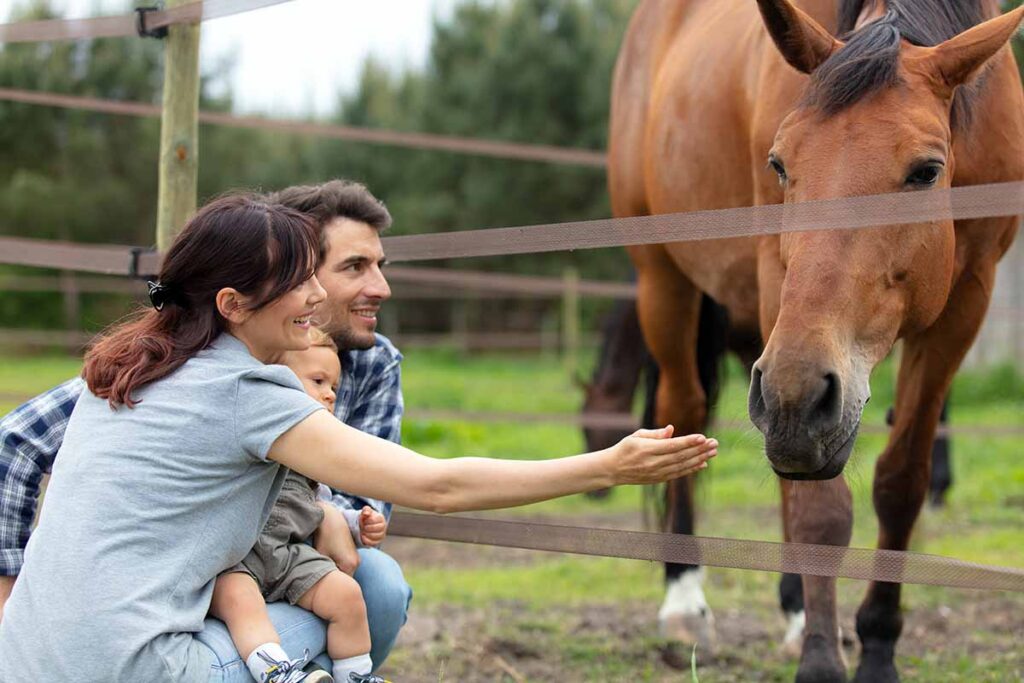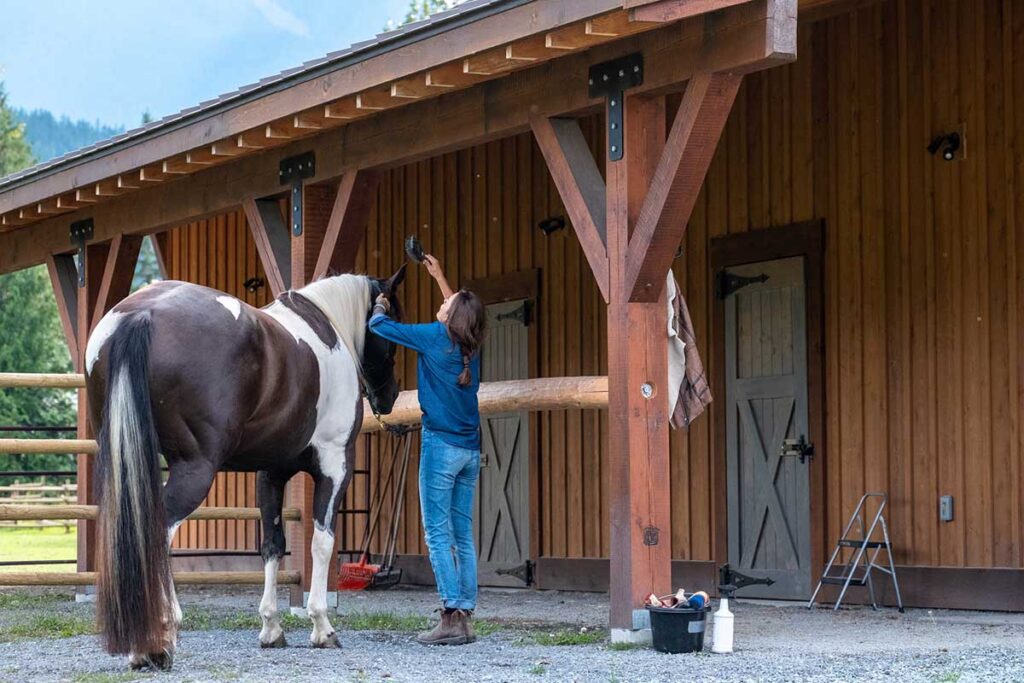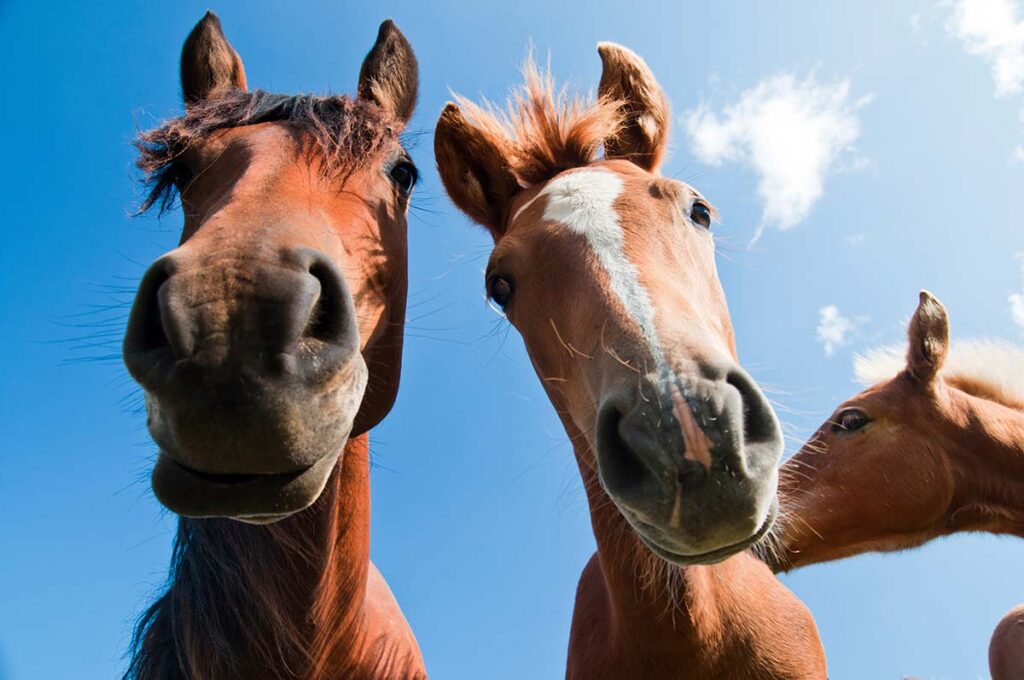Not all hay is created equal. So, before you toss your horse a few flakes from a new bale of hay, take a few seconds to inspect it. The reason we give our horse’s hay a once-over before feeding is to determine its quality and spot any red flags, such as mold. Luckily, you can tell a lot about hay just by smelling, feeling, and looking at it. When assessing the quality of hay, consider the following factors.
Pay Attention to These 7 Hay Characteristics

Type of Plant Grass hays, such as timothy or orchardgrass, provide sound basic nutrition. The higher the concentration of legumes, such as alfalfa or clover, the higher the energy content (too much legume hay can cause nutritional imbalances).
Leaves The leaves are the most nutrient-rich part of the plant, and good-quality hay will have more leafy material than stems.
Stage of Maturity When Cut Hay that is cut before full maturity is more nutritious. If it’s cut late, when seed is forming, hay not only loses some of its protein, energy-rich soluble fiber, vitamin and mineral content, but it is also harder for horses to digest.
Color and Aroma In general, the greener the color, the more nutritious and palatable a hay will be for your horse. Good hay smells fresh and slightly sweet. Acrid or musty smells usually indicate the presence of mold.
Texture Hay that contains too many hard, woody stems is difficult to digest; even if it’s cheaper, your horse is likely to pick through it for tasty bits and leave the bulk of the stems behind, costing you more in the long run. High-quality hay is fine-stemmed and pliable; it isn’t rigid enough to stab your hand when squeezed.
Weight Good-quality hay bales for horses are lightweight and contain fine grass that makes them springy: Drop one on end and it will bounce. Be wary of hay cut for cattle, which tends to be heavier, because the bovine digestive track has no trouble handling heavier, coarser and moldier hay.
Foreign Material Good hay contains few weeds and no debris, such as sticks, stones, or twine. Also look for the remains of blister beetles and critters like rodents, which can cause poisoning or botulism.
Take-Home Message
You can take some of the guesswork out of evaluating your hay by asking your equine nutritionist or county extension agent for help. They can tell you not only whether your hay is wholesome but also have it analyzed (for a small fee) to determine its basic constituents, such as total protein, energy, fat, and minerals.
This article originally ran on EQUUSMagazine.com.








